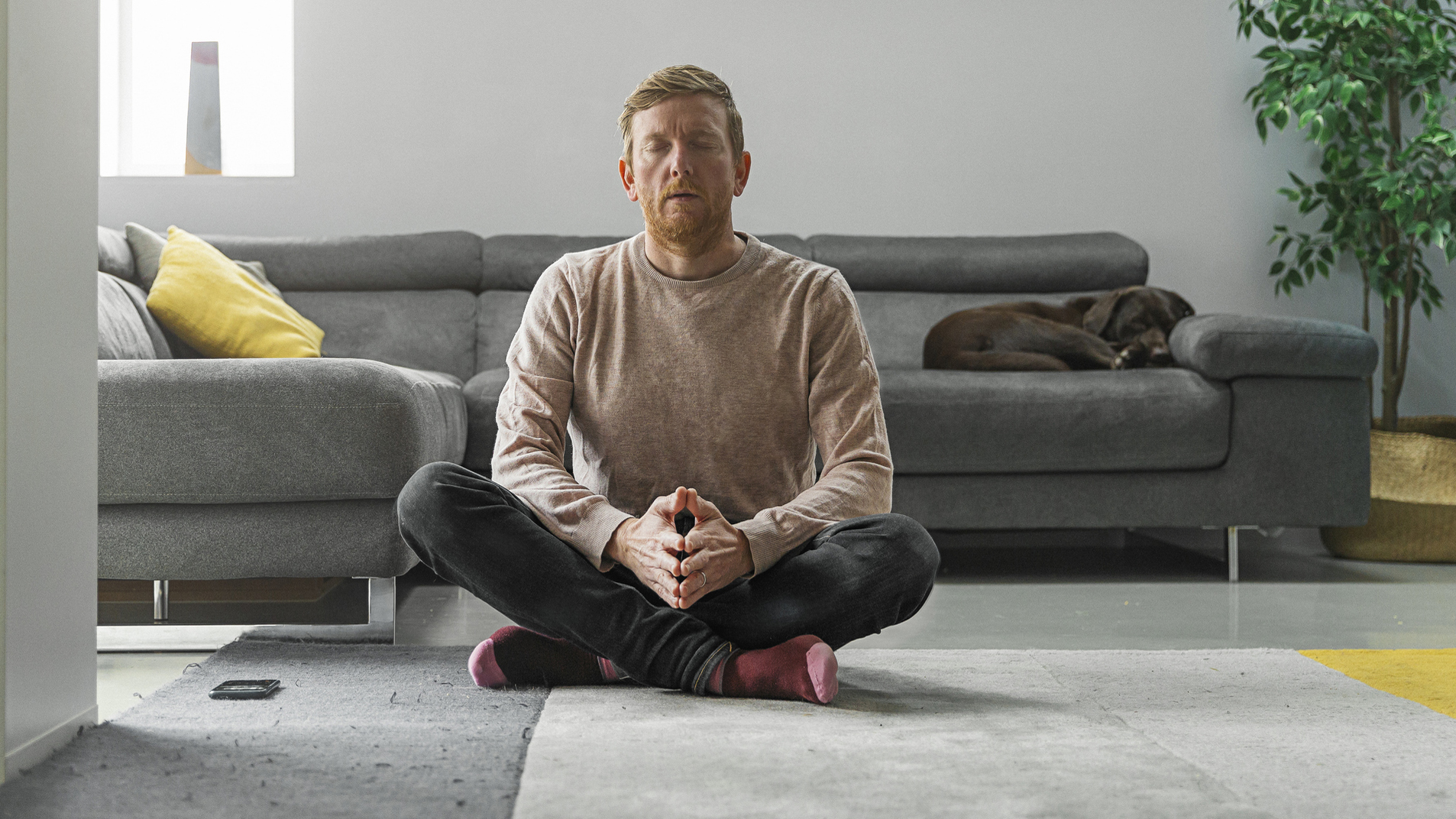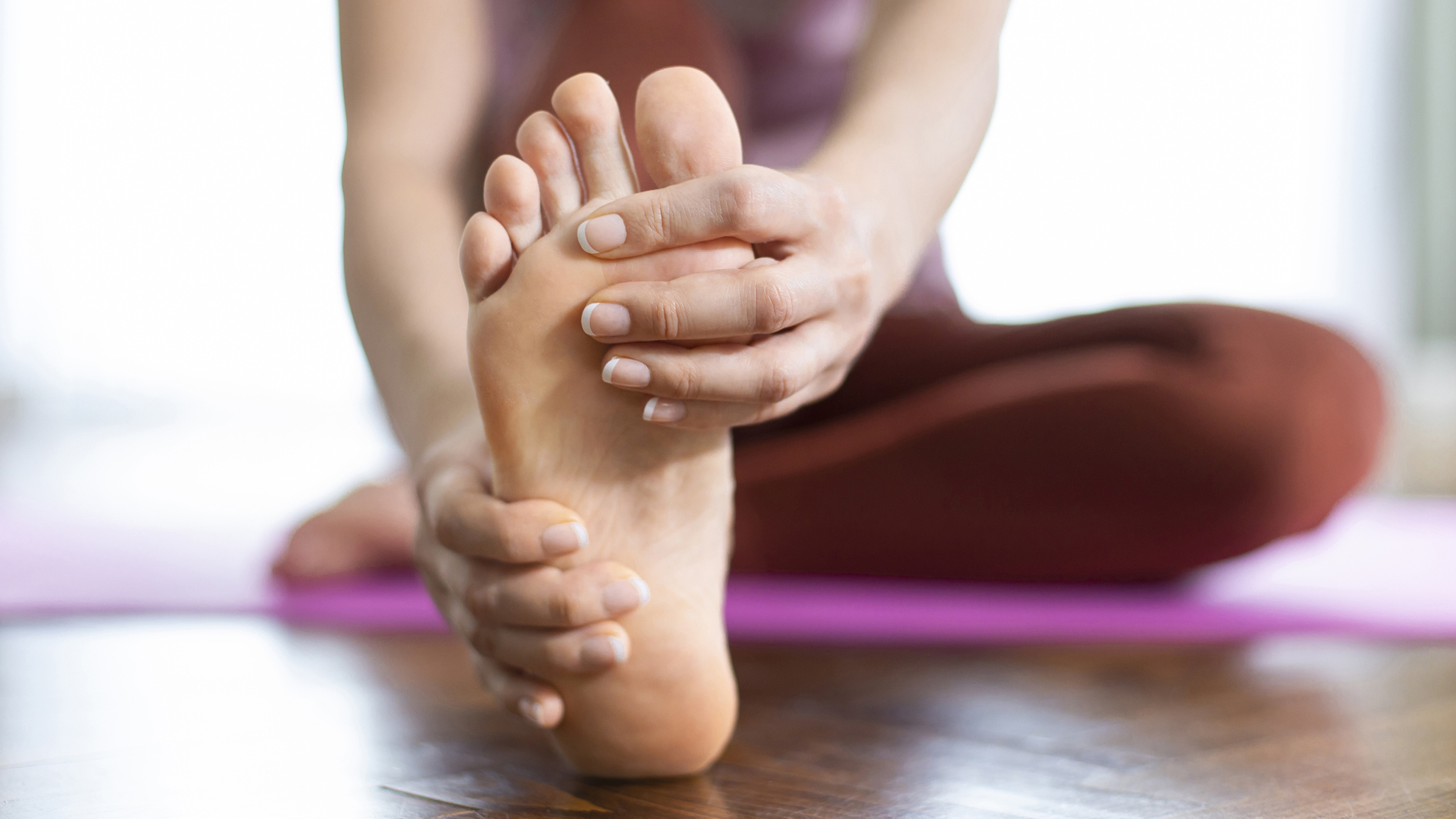Six healthy New Year's resolutions that don't involve the gym
If one of your resolutions this New Year is to improve your health, our experts reveal how to achieve this without hitting the gym.


New Year’s resolutions can be hard to stick to long-term and that’s often because they are not sustainable. The trick is to start small, with a few short-term goals you can work towards without feeling overwhelmed – like using the best exercise bike once a week, or taking a 15 minute walk every day in your lunch break.
We’ve enlisted the help of NASM qualified personal trainer Anthony Maritato, physiotherapist Helen O’Leary, registered dietitian Sandra Arevalo and Pilates instructor Robin Kendall to give us their best alternative New Year’s health resolutions that don’t involve the gym.
So whether you want to reduce your stress levels, up your daily steps, improve mobility or simply make some healthier habits, we’ve got you covered.
Resolution 1: Set a 1% gains goal

Personal trainer and physical therapist Maritato suggests focusing on small, manageable wins that can be scaled up over time. Instead of throwing yourself into full weight lifting mode, practice improving one area of your life by 1% each day.
“By focusing on 1% gains and compounding those gains over 30 days, we may achieve remarkable health improvements outside of the gym. For example, if my daily routine involves the accumulation of 5,000 steps, then a 1% increase tomorrow would be 5,050 steps. Adding those 50 steps might be as simple as parking at the far end of the parking lot.”
Over time, you end up adding quite a few steps into your daily routine. By the end of your 30 day period, you’d be hitting 6,672 steps a day. It doesn’t have to focus on steps, either – you could focus on increasing the length of time you spend meditating. By the end of your 30 day period, you’ll have nailed your New Year’s resolution 30 times in a row.
“Keep going and before you know it you will hit the 10,000 steps per day mark without a single one of those steps being in the gym,” says Maritato.
Start your week with achievable workout ideas, health tips and wellbeing advice in your inbox.

Anthony Maritato is a licensed physical therapist and personal trainer. Anthony completed his bachelor's degree in Kinesiology at Pennsylvania State University with a special emphasis on biomechanics. He obtained his Master's degree of Physical Therapy from Florida International University and has been a physical therapy private practice owner since 2001.
Resolution 2: Work on your vagus nerve

When we’re stressed out, the body stays on high alert, with stress hormones cortisol and adrenaline surging through the body – this, over time, can lead to a ton of health issues including chronic pain, weight gain, gut problems, and mood swings.
But here’s the thing, the body has its own superpower that can help reduce our fight or flight response – the vagus nerve system. It’s a major part of how our body and brain functions, helps us to do basic tasks and can trigger a relaxation response when we need it. You can stimulate the vagus nerve through breath work and regularly doing so could improve your sleep, attention span and day-to-day moods.
Physiotherapist Helen O’Leary suggests the following to help activate the vagus nerve: “Try doing some mindful movement – start a couple of times a week and slow things down. You can try some online Pilates classes for beginners or yin yoga. These require nothing but floor space and will cause you to focus on your body and movement rather than how strong you are.”
Squeezed for time? O’Leary says that focusing on your breath can also help stimulate the vagus nerve. The next time you're stuck between tasks, try taking five deep belly breaths, to calm you down.

Helen O’Leary is a chartered physiotherapist, Pilates instructor, and the director of Complete Pilates in London, England. Helen started her career as a physiotherapist in professional men’s rugby and with Cirque du Soleil, before launching Complete Pilates.
Resolution 3: Improve your ankle mobility

When you think of the ankle you probably don’t think it’s a priority area to work, but flexible strong ankles have a knock-on effect on everything else you are able to do as you workout, says Pilates instructor Kendall, from East of Eden.
“Think of the ankle as your foundation; build strength and mobility there and it will support your knees and hips when you squat and lunge, stabilize your landing and prevent injury when you jump...the list is endless.”
Here are a couple of ankle mobility exercises you can try, without stepping foot in the gym:
Heel Raises
- Start by standing with feet underneath your sit-bones, your hands flat against a wall or resting on a table or chair back.
- Exhale, then slowly press through the balls of the feet and lift your heels off the floor. Keep your knees straight and your spine upright.
- Inhale and lower your heels back to start position.
Ankle Circles
- Start seated (or lying down) with one ankle resting on the opposite knee.
- Slowly rotate your ankle in a circle – lead with the big toe and imagine moving through the numbers on a clock face, first clockwise then anticlockwise.
- Keep the movement small and focused on the foot and ankle without moving the leg.

Robin is an experienced Mat and Reformer Pilates Instructor with a demonstrated history of working in the health wellness and fitness industry. She has taught Pilates for over six years and her challenging classes encourage individuals to improve their technique and form.
Resolution 4: Start an ‘identity-based’ habit

Maritato told Fit&Well: “One of my favorite New Year’s health resolutions that does not involve going to the gym is to choose an identity-based habit like: ‘I will eat like a marathon runner for the next 30-days.’ My goal might be weight loss or improved performance in my next foot race, but instead of putting time in on the track or gym, I will assume the identity of someone who wins marathons.”
The thinking here is that if you focus on replicating the habits of your fitness idols, you’ll be able to adopt them into your own identity. Rather than having to actively remind yourself to eat healthy and practice good habits, it becomes a kind of game. Before you know it, your idol’s habits will become your own.
Resolution 5: Eat more fiber

One of the simple ways you can improve your health is by improving your digestion. You can do this by simply making sure you get enough fiber. If you’re dehydrated or lack dietary fiber, you might find that you regularly have to deal with constipation, but there are some easy ways to improve this.
Arevalo, a spokesperson for the Academy of Nutrition and Dietetics, told Fit&Well: “Make sure you eat whole grains such as beans, lentils and chickpeas, whole wheat products, brown rice and plenty of fruits and vegetables, while you drink at least eight cups of liquids per day. Start small. Start by eating a bowl of salad or a fruit every other day and as you get used to it start increasing the amount and frequency. You can also switch your white rice or bread for brown.”

Sandra is a recognized national expert on Latino culture and health, including health education, diabetes, prediabetes, nutrition, chronic diseases, obesity, lactation and social determinants of health, among others. She is a spokesperson for the Academy of Nutrition and Dietetics and the Am Assoc of Diabetes Educators.
Resolution 6: Stop biting your nails

Biting your nails isn’t only a bad habit because your nails don’t look good; it can give you infections, says Arevalo.
“Nails carry hundreds of pathogens in them that you are eating daily. People might bite their nails due to stress or anxiety. To stop biting your nails you can carry a little rock in your pocket. Every time that you feel the urge to bite your nails, massage the rock instead to keep your hands busy and away from your mouth.”
Other tools include special bitter-tasting nail polish, which should discourage you from nibbling, and try to keep your nails trimmed super-short too.
Maddy Biddulph is a journalist specializing in fitness, health and wellbeing content, with 26 years in consumer media working as a writer and editor for some of the bestselling newspapers, magazines and websites in the US and UK, including Marie Claire, The Sunday Times and Women’s Health UK.
She is a CIMPSA-certified PT and works one-on-one with clients, as well as running Circuits Club classes which mixes cardio and strength training and chair-based exercise classes for seniors.
